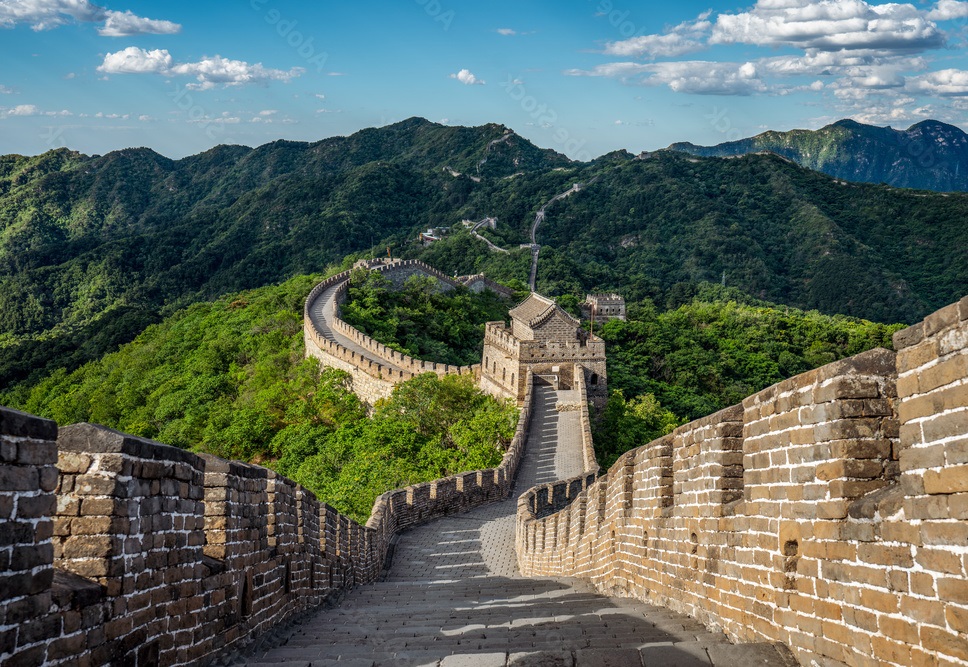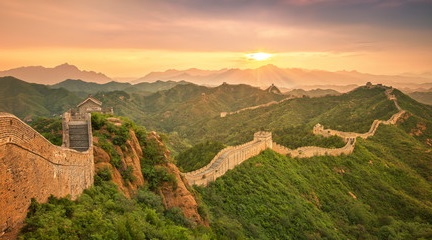The Great Wall of China – A Timeless Wonder of Human Achievement
The Great Wall of China is one of the most remarkable architectural feats in human history. Stretching across thousands of miles, this ancient structure symbolizes China’s strength, resilience, and ingenuity. Recognized as a UNESCO World Heritage Site, the Great Wall has become one of the most iconic landmarks in the world, attracting millions of travelers, historians, and adventurers each year. More than just a wall, it is a living monument that tells stories of empires, battles, culture, and endurance.
Origins and History of the Great Wall
The Great Wall was not built all at once but rather constructed over centuries by various Chinese dynasties. The earliest walls date back to the 7th century BCE, during the Warring States Period, when regional kingdoms built fortifications to protect their territories. However, it was during the reign of Emperor Qin Shi Huang (221–206 BCE), founder of the Qin Dynasty, that several regional walls were unified into the first version of what we now call the Great Wall.
Later dynasties, including the Han, Northern Wei, and especially the Ming Dynasty, expanded and reinforced the wall. The Ming Dynasty (1368–1644) is responsible for much of the wall we see today, using bricks, stone, and advanced defensive designs. Its purpose was to protect against invasions, particularly from nomadic tribes such as the Mongols and Xiongnu.
 Structure and Design
Structure and Design
The Great Wall is not a single continuous line but rather a network of walls, fortresses, watchtowers, and natural barriers like mountains and rivers.
Key Features of the Great Wall:
-
Length and Scope – The wall stretches over 21,000 kilometers (13,000 miles), making it the longest man-made structure in the world.
-
Watchtowers and Fortresses – Built at intervals, these towers allowed soldiers to keep watch and signal attacks using smoke or fire beacons.
-
Construction Materials – Early walls were made from tamped earth and wood, while later dynasties used stone and bricks for durability.
-
Mountain Integration – The wall was strategically constructed along ridges and mountains, enhancing its defensive capabilities.
-
Passes and Gates – Important trade and military passes, such as Jiayu Pass and Shanhai Pass, served as critical checkpoints.
Cultural and Symbolic Significance
Beyond its military function, the Great Wall has become a symbol of Chinese culture and perseverance. In Chinese tradition, it represents unity, protection, and the will of the people. Ancient Chinese poems, legends, and folklore often describe the Wall as a boundary between civilization and chaos.
One famous legend is the story of Meng Jiangnü, whose tears are said to have caused part of the Wall to collapse after her husband died while building it. This tale symbolizes the immense human cost of the project and the sacrifices of countless workers.
Today, the Great Wall stands not just as a defensive structure but as a national emblem, even featured on Chinese currency and stamps.
The Great Wall Through Time
Known as one of the “Seven Wonders of the Medieval World,” the Great Wall has stood for more than 2,000 years. Over time, it has weathered invasions, earthquakes, erosion, and human neglect. While much of it remains intact, some sections have fallen into ruin, overgrown by vegetation or eroded by natural forces.
During the Ming Dynasty, the wall was meticulously maintained, but after the fall of the dynasty, its military importance declined. Today, conservation projects aim to protect its most iconic sections while balancing the challenges of mass tourism.
Visiting the Great Wall Today
For modern travelers, visiting the Great Wall is a once-in-a-lifetime experience. Several sections are open to tourists, each offering unique landscapes and historical insights.
Popular Sections of the Great Wall:
-
Badaling – The most visited and well-preserved section, located near Beijing, with easy access and restored pathways.
-
Mutianyu – Known for fewer crowds, lush scenery, and cable cars for easier access.
-
Jinshanling – A scenic section with partially restored walls, perfect for hiking enthusiasts.
-
Jiayu Pass – The westernmost fortress, marking the end of the Wall in the desert.
-
Simatai – Known for its rugged and steep terrain, offering adventurous hikes.
Travel Tips:
-
Best Time to Visit – Spring (April–June) and autumn (September–October) provide pleasant weather and stunning views.
-
What to Bring – Comfortable walking shoes, water, sunscreen, and a camera for breathtaking panoramas.
-
Respect the Site – Avoid climbing on fragile ruins and follow conservation guidelines.
The Great Wall in Global Culture
The Great Wall is often described as the only man-made structure visible from space—a myth, though its sheer scale remains awe-inspiring. It has been featured in countless documentaries, films, and books. Movies such as The Great Wall (2016) and travel shows have further popularized its image worldwide.
Its recognition as a UNESCO World Heritage Site in 1987 cemented its status as a global treasure, encouraging preservation efforts and international admiration.
Conservation Challenges
Despite its grandeur, the Great Wall faces challenges. Natural erosion, vandalism, and uncontrolled tourism have damaged many sections. Restoration projects led by the Chinese government and UNESCO aim to protect the Wall while ensuring responsible tourism.
Community involvement has also become crucial, with locals participating in maintaining and protecting nearby sections. Efforts are being made to balance heritage preservation with modern tourism demands.
Why the Great Wall Matters
The Great Wall of China is not merely an architectural wonder—it is a testament to human perseverance, creativity, and unity. It embodies the struggles of dynasties that sought to protect their people and the labor of millions who built it stone by stone.
For modern generations, the Great Wall serves as both a reminder of history and a source of national pride for China. Its vast scale and timeless presence inspire people worldwide, proving that human ambition can create wonders that last for millennia.
Conclusion: Walking Through History
Walking along the Great Wall of China is like stepping into a living history book. Every stone and tower whispers stories of emperors, soldiers, workers, and civilizations that shaped the world. From its strategic design to its cultural legends, the Great Wall remains one of the greatest achievements of mankind.
As a symbol of endurance and cultural identity, it continues to fascinate travelers, scholars, and dreamers. Whether you visit the bustling Badaling section or hike the remote stretches of Jiayu Pass, the Great Wall of China will leave you humbled by the scale of human determination and the passage of time.
Indeed, the Great Wall is not just a wall—it is a journey through history, a bridge between past and present, and a wonder that stands as one of humanity’s most enduring creations.


You must be logged in to post a comment.